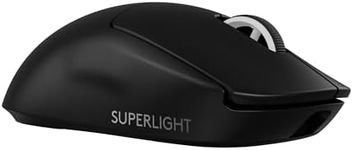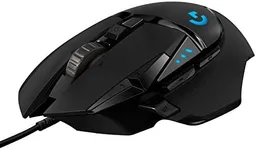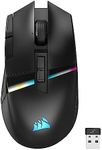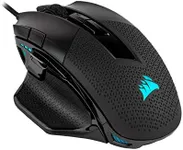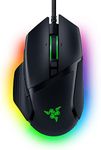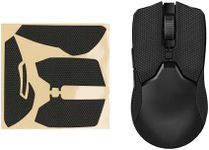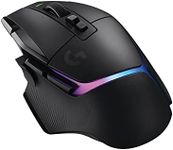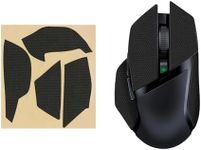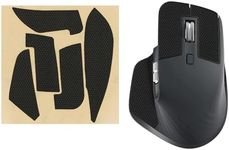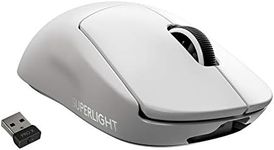Buying Guide for the Best Gaming Mouses
Choosing the right gaming mouse can significantly enhance your gaming experience. A good gaming mouse can provide better precision, comfort, and responsiveness, which are crucial for both casual and competitive gaming. When selecting a gaming mouse, it's important to consider several key specifications to ensure it meets your needs and preferences. Here are the key specs you should focus on and how to navigate them.DPI (Dots Per Inch)DPI measures the sensitivity of the mouse. A higher DPI means the cursor will move further on the screen for each inch the mouse is moved. This is important for gaming because it affects how quickly and accurately you can aim and move. Low DPI (400-800) is suitable for precise movements, often preferred in first-person shooters. Medium DPI (800-1600) offers a balance between speed and accuracy, good for a variety of games. High DPI (1600+) is for fast movements, useful in games that require quick reflexes. Choose a DPI setting that matches your gaming style and the type of games you play.
Polling RateThe polling rate is how often the mouse reports its position to the computer, measured in Hertz (Hz). A higher polling rate means the mouse is more responsive. Common polling rates are 125Hz, 500Hz, and 1000Hz. For most gamers, a polling rate of 500Hz or 1000Hz is ideal as it provides a smooth and responsive experience. If you play fast-paced games, a higher polling rate can give you a competitive edge.
Sensor TypeGaming mice come with either optical or laser sensors. Optical sensors are generally more accurate and consistent, making them a popular choice for most gamers. Laser sensors can work on more surfaces and offer higher DPI settings but may suffer from acceleration issues. If you prioritize precision and consistency, go for an optical sensor. If you need versatility in terms of surface compatibility, a laser sensor might be better.
Ergonomics and DesignThe shape and design of the mouse are crucial for comfort, especially during long gaming sessions. Ergonomic mice are designed to fit the natural shape of your hand, reducing strain. There are different designs for different grip styles: palm grip, claw grip, and fingertip grip. Choose a mouse that feels comfortable in your hand and matches your grip style. Additionally, consider the weight of the mouse; some gamers prefer a lighter mouse for quick movements, while others prefer a heavier mouse for stability.
Buttons and CustomizationGaming mice often come with additional buttons that can be programmed for various functions, such as macros or shortcuts. This can be particularly useful in games that require complex commands. Look for a mouse with a number of buttons that suits your needs. Some mice also offer customization options like adjustable weights, RGB lighting, and software for fine-tuning settings. Choose a mouse that offers the level of customization you need to enhance your gaming experience.
Build Quality and DurabilityA good gaming mouse should be durable enough to withstand intense gaming sessions. Look for mice made from high-quality materials and with good build quality. Check for features like braided cables, reinforced buttons, and a solid overall construction. A durable mouse will last longer and provide a more reliable performance over time.
Wireless vs. WiredGaming mice come in both wired and wireless options. Wired mice generally offer a more stable connection and lower latency, which is crucial for competitive gaming. Wireless mice provide more freedom of movement and a cleaner setup but may have slight latency and require battery management. Recent advancements have made wireless mice almost as responsive as wired ones. Choose based on your preference for mobility and setup convenience.
